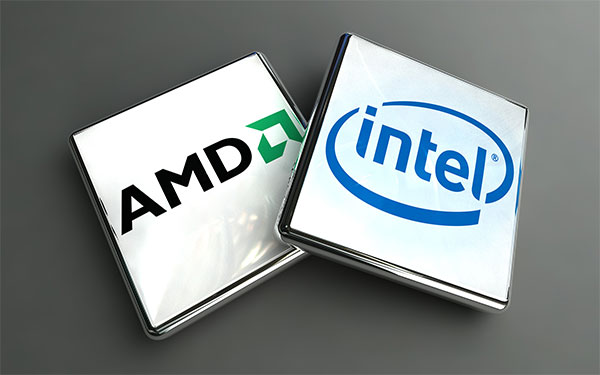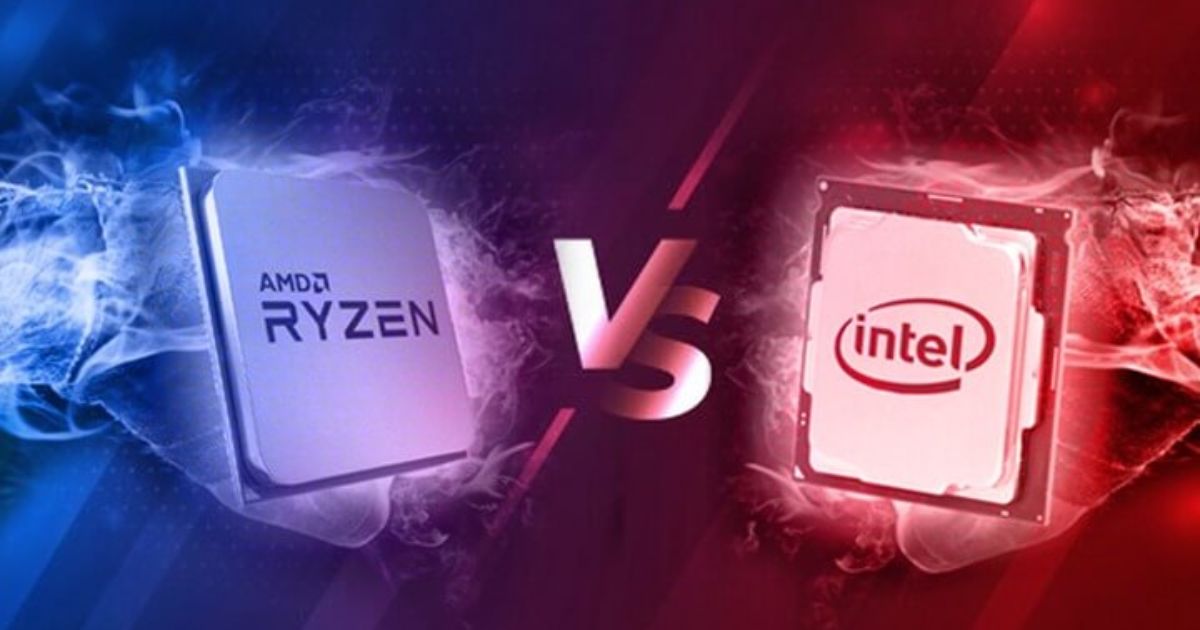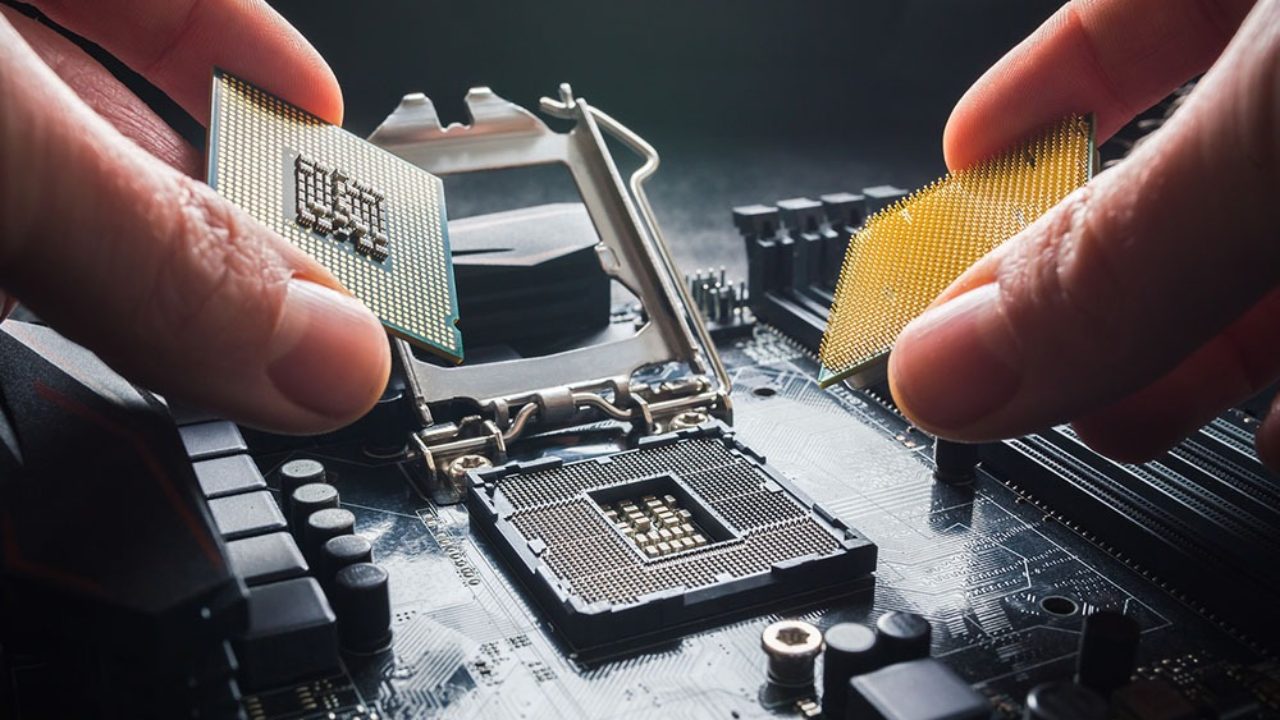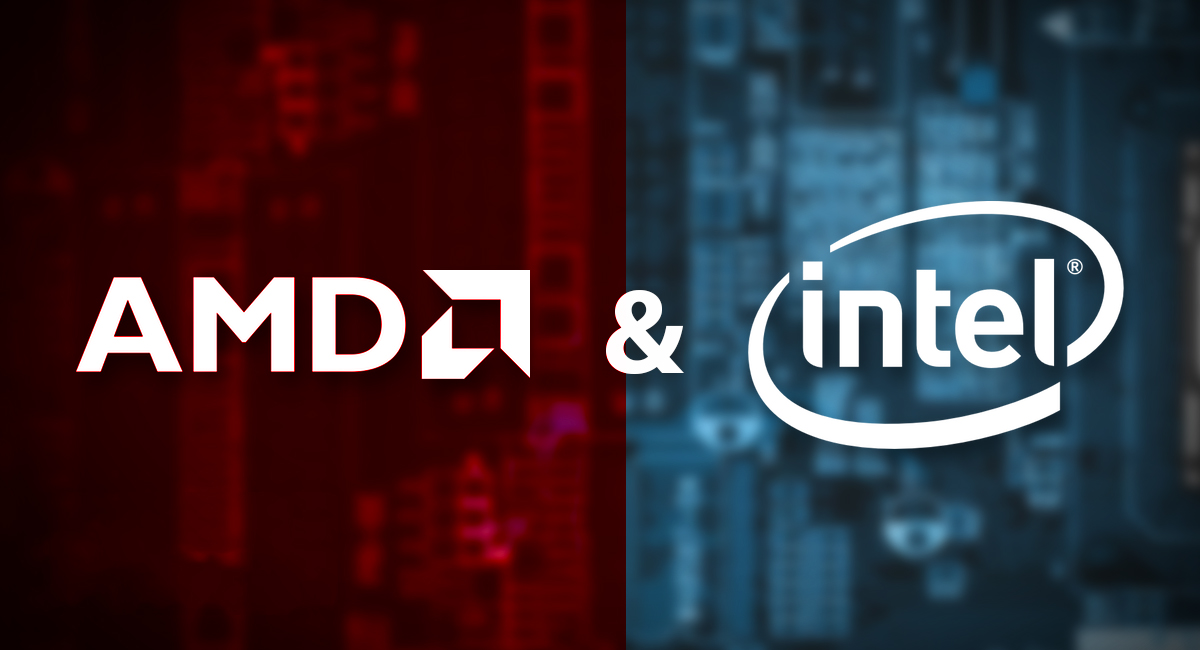In the realm of computer hardware, two giants stand at the forefront: Intel and AMD. These companies have long dominated the market for central processing units (CPUs), powering the devices we use daily, from laptops and desktops to servers and gaming consoles. While both Intel and AMD offer powerful and innovative processors, there are key differences between their architectures, performance characteristics, and market strategies. Let’s delve into the nuances of Intel and AMD chips to understand how they stack up against each other.
Understanding the Differences Between Intel and AMD Chips

Architecture:
Intel and AMD employ distinct architectural approaches in designing their processors, each with its own strengths and trade-offs. Intel processors typically utilize a proprietary architecture known as x86, which has been refined and optimized over decades of development. In contrast, AMD processors are based on the x86 architecture as well but often incorporate innovations such as simultaneous multithreading (SMT) and chiplet designs to enhance performance and efficiency.
Performance:
Both Intel and AMD chips offer competitive performance across a range of computing tasks, from everyday productivity to demanding gaming and content creation workloads. Historically, Intel has held a slight edge in single-threaded performance, making its processors ideal for tasks that rely heavily on individual core performance, such as gaming. However, AMD has made significant strides in recent years with its Ryzen processors, offering comparable single-threaded performance while excelling in multi-threaded workloads thanks to its higher core and thread counts.
Price-to-Performance Ratio:
One area where AMD has gained a notable advantage over Intel is in the price-to-performance ratio of its processors. AMD Ryzen CPUs often offer comparable or better performance than their Intel counterparts at a lower price point, making them an attractive option for budget-conscious consumers and enthusiasts alike. This value proposition has propelled AMD to gain market share in recent years, particularly in the desktop and gaming segments.
Integrated Graphics:
Intel has long been known for its integrated graphics solutions, which offer decent performance for basic tasks and casual gaming without the need for a dedicated graphics card. AMD, on the other hand, has made significant strides with its Radeon Vega and Radeon Graphics solutions integrated into its Ryzen processors, providing competitive graphics performance for entry-level gaming and multimedia applications.

Compatibility and Ecosystem:
Intel and AMD chips are compatible with a wide range of motherboards and chipsets, although each may require specific socket types and BIOS updates for optimal compatibility. Intel has a larger market share and broader ecosystem of motherboard partners, offering a wide selection of motherboard options for consumers and system builders. However, AMD has made significant strides in expanding its ecosystem with its Ryzen processors, gaining support from leading motherboard manufacturers and offering feature-rich chipsets such as AMD B450, X570, and B550.
Intel and AMD chips represent two distinct but equally formidable forces in the world of CPU technology. While Intel has long been the dominant player with its established reputation for performance and reliability, AMD has emerged as a strong contender with its Ryzen processors offering competitive performance, value, and innovation. Ultimately, the choice between Intel and AMD depends on individual preferences, budget considerations, and specific computing needs. Whether you prioritize raw performance, value, or ecosystem compatibility, both Intel and AMD offer compelling options to meet your computing requirements.
Pros and Cons of Intel and AMD Chips: Navigating the Choices in CPU Technology
In the dynamic world of computer hardware, the choice between Intel and AMD chips is a crucial decision that can significantly impact the performance and capabilities of your system. Both companies offer a wide range of processors tailored to diverse computing needs, each with its own set of advantages and drawbacks. Understanding the tvtoto strengths and weaknesses of Intel and AMD chips is essential for making informed decisions when building or upgrading your computer. Let’s explore the pros and cons of Intel and AMD chips to help you navigate the choices in CPU technology.
Intel Chips:
Pros:
- Strong Single-Threaded Performance: Intel chips have long been praised for their robust single-threaded performance, making them ideal for tasks that rely heavily on individual core performance, such as gaming and single-threaded applications.
- Widespread Compatibility: Intel processors are compatible with a wide range of motherboards and chipsets, offering consumers a broad selection of options when building or upgrading their systems. Intel’s larger market share and established ecosystem of motherboard partners contribute to this compatibility.
- Integrated Graphics Solutions: Intel processors often come equipped with integrated graphics solutions, providing decent performance for basic tasks and casual gaming without the need for a dedicated graphics card. This integrated graphics capability is particularly useful for budget-conscious consumers and small form factor systems.
Cons:
- Higher Price Points: Intel chips tend to be priced higher than their AMD counterparts with similar performance levels, making them less competitive in terms of price-to-performance ratio. Budget-conscious consumers may find Intel processors less appealing due to their higher cost.
- Limited Core and Thread Counts: Intel’s consumer-grade processors typically offer fewer cores and threads compared to AMD’s Ryzen counterparts at similar price points. This can impact multi-threaded performance in tasks such as content creation, video editing, and multitasking.

AMD Chips:
Pros:
- Competitive Performance and Value: AMD Ryzen processors offer competitive performance and value, often outperforming Intel chips at similar price points. AMD’s emphasis on delivering high core and thread counts has made Ryzen processors particularly attractive for multi-threaded workloads and productivity tasks.
- Innovative Architectures: AMD has introduced innovative architectural features such as chiplet designs and simultaneous multithreading (SMT), enhancing performance, efficiency, and scalability across its Ryzen lineup. These architectural innovations contribute to AMD’s reputation for cutting-edge technology and performance.
- Lower Price Points: AMD chips typically offer better price-to-performance ratios compared to Intel processors, making them an attractive option for budget-conscious consumers and enthusiasts looking to maximize value without compromising on performance.
Cons:
- Less Established Ecosystem: While AMD has made significant strides in expanding its ecosystem of motherboard partners and chipsets, it still lags behind Intel in terms of market share and motherboard compatibility. Consumers may encounter fewer options and features when choosing AMD-compatible motherboards.
- Integrated Graphics Performance: While AMD Ryzen processors with integrated Radeon graphics offer decent performance for basic tasks and entry-level gaming, they may not match the performance levels of Intel’s integrated graphics solutions. Gamers and multimedia enthusiasts may prefer Intel’s integrated graphics for their superior performance in certain scenarios.
Conclusion:
The choice between Intel and AMD chips ultimately depends on individual preferences, budget considerations, and specific computing needs. While Intel chips excel in single-threaded performance and compatibility, AMD chips offer competitive performance, value, and innovative features. By weighing the pros and cons of Intel and AMD chips, consumers can make informed decisions that align with their priorities and goals when building or upgrading their computer systems.
Read More Article About “Carson Wentz’s Redemption Arc: Securing the Rams’ Playoff Path and His NFL Future“

